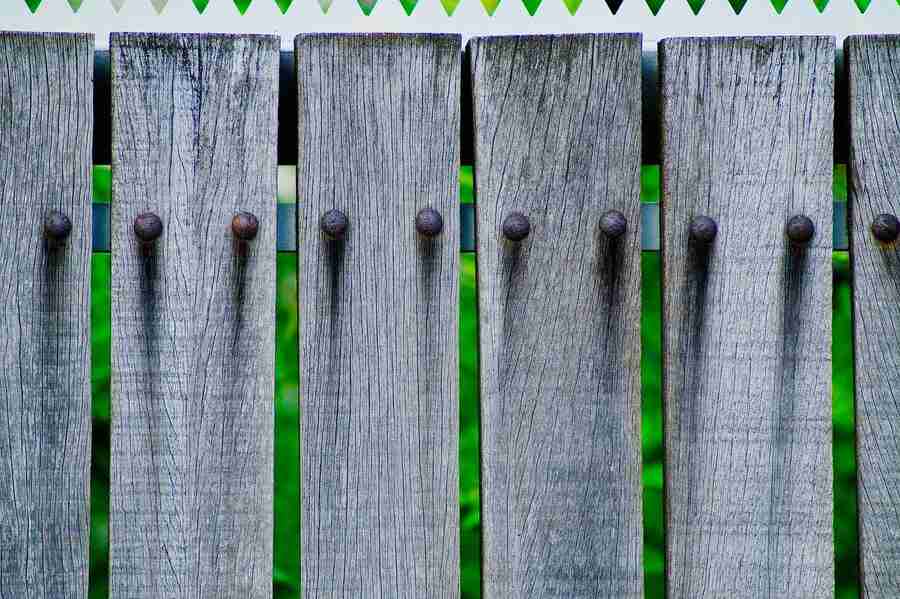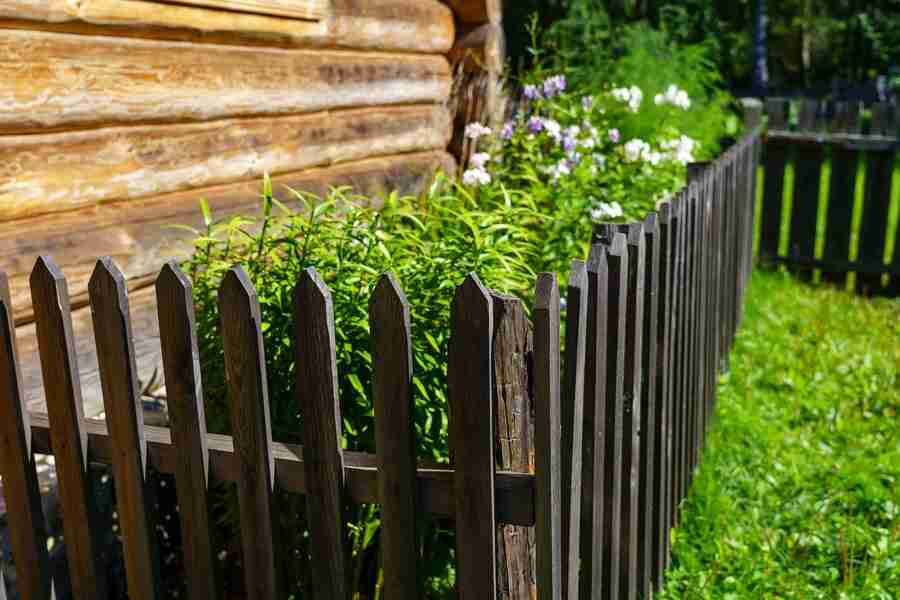
As we strive towards sustainability and environmental consciousness, the concept of recycling extends far beyond just paper and plastic. Have you ever considered the fate of your old fence panels after they’ve weathered years of use? “Fence Recycling: Giving Your Old Fence a New Purpose” explores a creative solution to this often overlooked aspect of outdoor renovation.
In this blog series, we delve into the world of repurposing old fences, transforming what might otherwise end up in a landfill into something useful and environmentally friendly. From crafting charming garden borders to upcycling into stylish furniture pieces, discover the myriad of possibilities that lie within your worn-out fence panels. Join us as we explore the beauty of sustainability through the lens of fence recycling.
Assessing the Condition of Your Old Fence
Before embarking on any recycling or repurposing project, it’s crucial to assess the condition of your old fence. This involves examining factors such as structural integrity, material quality, and overall wear and tear. By conducting a thorough assessment, you can determine whether the fence is salvageable for recycling purposes or if it requires replacement.
Additionally, assessing the condition of your old fence allows you to identify potential safety hazards and plan accordingly for its disposal or transformation. This section will provide guidance on how to assess the condition of your old fence effectively, empowering you to make informed decisions about its future.
Creative Ways to Repurpose Fence Panels
When it comes to fence recycling, creativity knows no bounds. In this section, we explore a myriad of innovative ways to repurpose old fence panels beyond their original function. From crafting decorative accents for your home and garden to constructing unique outdoor structures, the possibilities are endless. Whether you’re a seasoned DIY enthusiast or new to repurposing, this section will inspire you to think outside the box and breathe new life into your old fence panels.
Discover how simple modifications and creative ingenuity can transform mundane materials into functional and aesthetically pleasing assets for your space. Join us as we unlock the potential of fence recycling through inventive and sustainable design solutions.
Transforming Fences into Garden Borders
Your old fence panels can become the foundation for beautiful garden borders that enhance the visual appeal of your outdoor space. In this section, we explore the process of transforming discarded fences into functional and decorative garden edging. By repurposing fence materials, you can create delimited spaces for planting beds, pathways, and borders, adding structure and charm to your garden landscape.
Learn how to repurpose different types of fencing materials to suit your garden’s aesthetic and practical needs. Whether you prefer a rustic, natural look or a more polished finish, there are numerous design options to explore. Join us as we delve into the art of transforming old fences into stunning garden borders that breathe new life into your outdoor oasis.
Upcycling Fence Materials for DIY Projects
Unlock your inner creativity and embark on a journey of DIY projects using upcycled fence materials. This section explores how you can repurpose various components of old fences to create new and exciting items for your home and garden. From crafting unique art pieces and outdoor decor to constructing functional storage solutions and play structures, upcycling fence materials offers endless possibilities.
Learn how to harness the inherent character and durability of wood, metal, or vinyl fence panels to craft one-of-a-kind creations that reflect your personal style and ingenuity. With a little imagination and some basic tools, you can transform ordinary fence parts into extraordinary DIY treasures, all while reducing waste and minimizing your environmental footprint.

Building Stylish Furniture with Old Fence Panels
Why buy new furniture when you can repurpose old fence panels into stylish and functional pieces for your indoor and outdoor spaces? In this section, we explore the art of furniture making using reclaimed fence materials. Discover how to transform weathered wood or sturdy metal fencing into custom-designed tables, chairs, benches, and more.
Whether you prefer a rustic, farmhouse-inspired aesthetic or a sleek, modern look, repurposing old fence panels allows you to create furniture that is as unique as it is sustainable. Learn essential techniques for cutting, sanding, and finishing fence materials to achieve professional-quality results. Join us as we reimagine the potential of old fences, turning them into statement furniture pieces that elevate your home decor while minimizing waste and promoting eco-conscious living.
Environmental Benefits of Fence Recycling
Fence recycling offers significant environmental benefits that extend beyond waste reduction and resource conservation.
- Reduces landfill waste: By diverting old fence materials from landfills, fence recycling helps alleviate the burden on waste management systems and minimizes the need for new landfill space.
- Conserves natural resources: Repurposing old fence panels reduces the demand for new materials, such as wood or metal, thus conserving valuable natural resources and minimizing the environmental impact of extraction and manufacturing processes.
- Minimizes carbon emissions: Recycling fence materials requires less energy than producing new materials from scratch, resulting in lower carbon emissions and contributing to efforts to combat climate change.
- Preserves ecosystems: By reducing the need for new resource extraction, fence recycling helps protect fragile ecosystems, such as forests and wetlands, and preserves biodiversity for future generations.
- Promotes circular economy: Embracing fence recycling fosters a circular economy where materials are reused and repurposed, rather than disposed of after a single use, leading to a more sustainable and resilient society.
Partnering with Local Recycling Centers for Fence Disposal
When it comes to disposing of old fence materials responsibly, partnering with local recycling centers can be a game-changer. This section explores the benefits of working with recycling facilities to properly dispose of your old fence panels in an environmentally friendly manner. Learn about the types of materials accepted by recycling centers and the recycling processes involved, ensuring that your old fences are diverted from landfills and recycled into new products or materials whenever possible.
Discover how local recycling centers can help you navigate the logistics of transporting and disposing of large or bulky fence materials, making the recycling process more convenient and accessible. By collaborating with recycling centers, you can play a vital role in promoting sustainable waste management practices in your community and beyond.
Tips for Disassembling and Preparing Fences for Recycling
Disassembling and preparing old fences for recycling requires careful planning and execution. Here are some essential tips to streamline the process:
- Assess the condition of your fence: Before starting the disassembly process, evaluate the structural integrity and material quality of your fence panels. This will help you determine the best approach for dismantling and preparing the materials for recycling.
- Gather the necessary tools: Equip yourself with the right tools for the job, including gloves, safety goggles, pry bars, hammers, and power tools if necessary. Having the proper equipment on hand will make the disassembly process safer and more efficient.
- Remove fasteners carefully: Use a pry bar or hammer to remove nails, screws, or other fasteners from the fence panels. Take care to avoid damaging the wood or metal during this process, as intact materials are easier to recycle.
- Clean and prepare the materials: Once the fasteners have been removed, clean the fence panels to remove any dirt, debris, or surface treatments that may interfere with the recycling process. Sanding or stripping may be necessary for painted or stained materials.
- Organize and transport the materials: After disassembly and preparation, organize the materials into separate piles based on material type (wood, metal, etc.). This will make it easier to transport the materials to a recycling center or arrange for pick-up.
With these tips in mind, you can efficiently disassemble and prepare your old fence panels for recycling, minimizing waste and contributing to a more sustainable future.
Inspiring Examples of Fence Recycling Success Stories
To wrap up our exploration of fence recycling, this section highlights inspiring examples of individuals, communities, and organizations that have embraced fence recycling with remarkable success. From innovative art installations and community projects to sustainable building initiatives and business ventures, these stories showcase the transformative power of repurposing old fence materials.
Learn how creative thinking, resourcefulness, and a commitment to sustainability have led to tangible environmental and social benefits in diverse contexts. Whether it’s turning old fence panels into public artworks, building affordable housing using reclaimed materials, or launching a thriving business centered around fence recycling, these success stories demonstrate the potential for positive change when we rethink our approach to waste management.
Fence recycling presents a powerful opportunity to minimize waste, conserve resources, and foster creativity in our communities. By repurposing old fence materials, we not only reduce the burden on landfills but also contribute to a more sustainable and resilient future. From transforming fences into garden borders and stylish furniture to partnering with local recycling centers and celebrating success stories, the possibilities for fence recycling are endless. As we’ve seen, each step towards embracing fence recycling brings us closer to a world where waste is minimized, resources are valued, and creativity flourishes.
For more information on fence recycling and sustainable fencing solutions, contact High Quality Fence at 209-815-9015 or email us at info@highqualityfence.com. Let’s work together to build a greener, more resilient future for generations to come.


